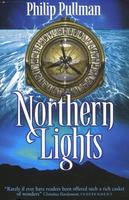Subject

photo credits: Wikimedia Commons
Sápmi (Northern Sami: [ˈsapmi], Lule Sami: Sábme / Sámeednam, Southern Sami: Saepmie, Pite Sami: Sämijednam, Ume Sami: Sábmie, Inari Sami: Säämi, Skolt Sami: Sääʹmjânnam, Kildin Sami: Са̄мь е̄ммьне, romanized: Saam' jiemm'n'e) is the cultural region traditionally inhabited by the Sámi people. Sápmi is in Northern Europe and includes the northern parts of Fennoscandia, also known as the "Cap of the North". The region stretches over four countries: Norway, Sweden, Finland, and Russia. On the north, it is bounded by the Barents Sea, on the west by the Norwegian Sea, and on the east by the White Sea. The area is historically referred to as Lapland in English, although the term "Lapp" for its inhabitants is now considered pejorative. Norwegian Sápmi was historically called Finnmǫrk, a name used for the county Finnmark.Sápmi refers to the areas where the Sámi people have traditionally lived but overlap with other regions and definitions. In practice, most of the Sámi population is largely concentrated in a few traditional areas in the northernmost part of Sápmi, such as Kautokeino and Karasjok, except for those who have left for the larger cities. Culturally, Inari is considered one of the centres of Sámi culture, and because of that, it is also widely known as the "capital of Sámi culture".The Sámi people are estimated to make up only 2.5–5% of the total population of Sápmi today. Because of this, no political organisation advocates secession, although several groups desire more territorial autonomy or self-determination for the region's Indigenous people. Source: Wikipedia (en)
Subject - wd:Q62132
